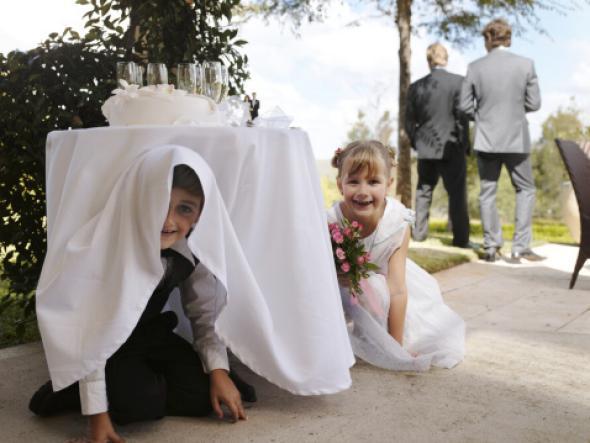If you want your friends to invite your children to their wedding, shaming them into it is probably not the best strategy. Nevertheless, much of the argument made by David Andrew Stoler in his recent Salon essay commanding couples to include their friends’ kids centers around the idea that leaving kids off the invite list is an act of selfishness that the bride and groom, bride and bride, or groom and groom will later regret.
I’m sympathetic to Stoler’s case. Modern Americans are living in a time and place that is highly unaccommodating to parents, and we breeders could use all the help we can get. Still, I think it’s a couple’s prerogative to have a child-free wedding if they want one. I also think they shouldn’t want one, and not for parents’ sake, but for their own. Here’s why.
The costs of weddings have steadily increased over the past five years, with the price tag of the average wedding rising to $32,641 in 2015, a 4.6 percent jump from the previous year. (As Slate’s Will Oremus pointed out in 2013, this is the average, not median, cost. Most people probably aren’t spending this much on their weddings, though they are likely to be spending more than they would have spent in the past.) Many attribute this shift to social media, and the fact that today everyone is like Princess Diana and Prince Charles, their nuptials documented for the world to see. They want to look good.
As Brides editor-in-chief Keija Minor explained to CNBC, Pinterest and Instagram posts can transform an extravagant add-on, like Kim Kardashian and Kanye West’s flower wall (rumored to cost $136,000), into something that seems common, and therefore reasonable. But once it gets too popular, forget it. Because the goal among the wedding planners of Instagram and Pinterest, where 70 percent of users have wedding boards before they are even engaged, is to stand out. Hot tips for this season? Mason jars, cutesy signs, and truffle oil are out. Wine smoothies and dynamic colors are in. No wonder so many feel stressed out by weddings.
For so many couples, a wedding has become, first and foremost, a chance to showcase their highly refined taste. The results are magazine-worthy events with the emotional warmth of an airport first-class lounge. Sure the flowers are lovely, and parts of the ceremony are moving, but the overall effect of these elaborately produced nuptials is a sterile one. This is where children can help.
Yes, the single-digit spawn of your friends and family will likely rupture whatever Victorian or seaside fantasy a couple tirelessly worked, and bookmarked, to create. But these fantasies should be ruptured. Weddings aren’t sets, couples aren’t actors, and, to belabor the metaphor, guests aren’t extras. Instead, weddings are a moment of ritualized togetherness in which two people declare their commitment to each other surrounded by the people they love. That’s a beautiful thing, but it’s so easily obscured by the layers and layers of Pinterest-inspired accoutrements that couples dump on top of it.
I know I sound like a party pooper, or part of a chorus of critics railing against our increasingly extravagant wedding culture, or weddings overall. But while my own nuptials were modest by my demographic’s standards, I am not offended by the presence of a whiskey bar or professional-grade photo booth at a wedding. What does offend me is when those details suck the energy out of the room, which they so often do. I care about this because, in truth, I love weddings, and take great pleasure in riding the emotional arc from tenderness to elation that good ones provide.
Children lend festivities an element of chaos and unpredictability, a variety of which not even the best wedding planner around can prepare for. There might be laughter, whining, dancing, and crying, and all at inappropriate moments. A few guests might feel annoyed, but most will see it as an invitation for improvisation and authentic feeling in an environment that’s increasingly devoid of it. Those little walking ids inspire within us feelings of freedom and abandon; an ability to find joy in imperfection. This is an ideal state for newlyweds, and one rarely achieved through anything found on Pinterest.
